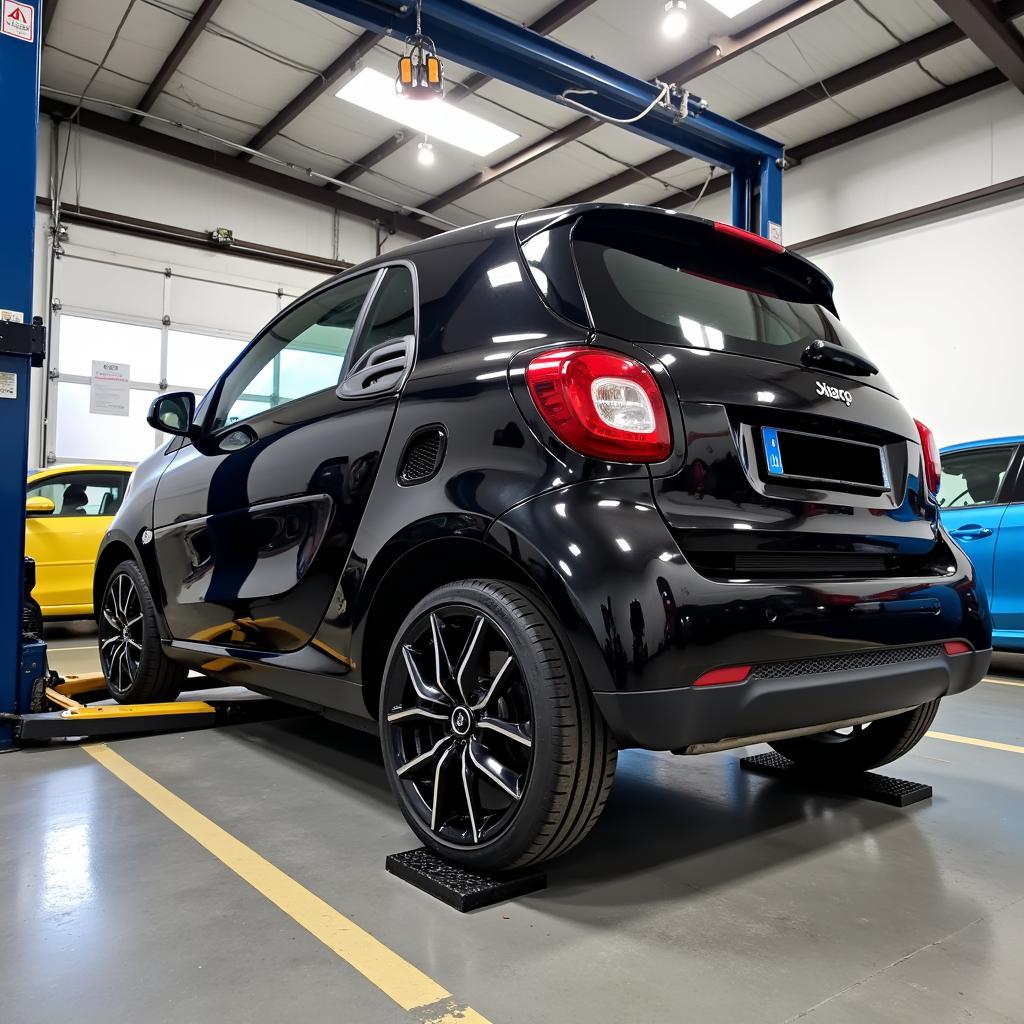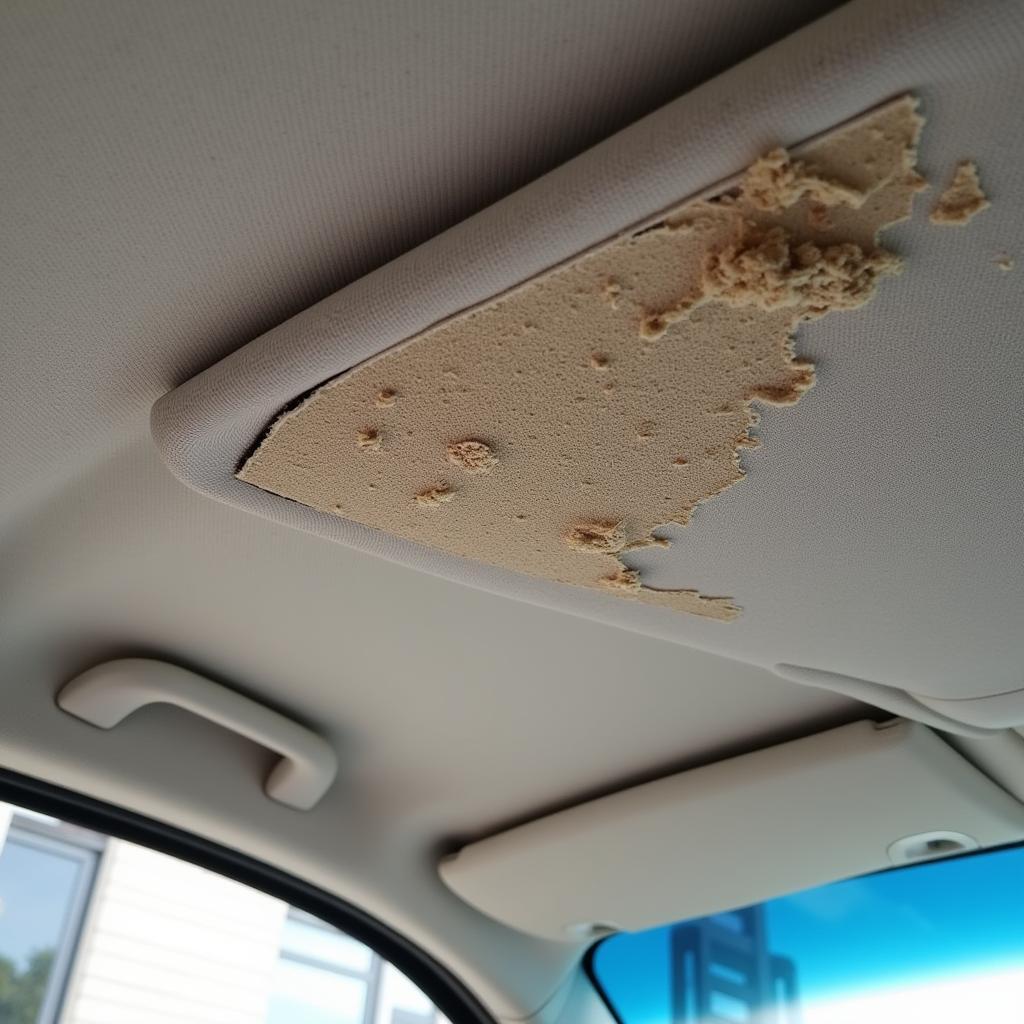Smart Car Front Suspension Problems can be a real headache, impacting your ride comfort and even safety. Whether you’re a seasoned mechanic or a smart car owner, understanding the common issues and how to troubleshoot them is crucial for keeping your vehicle in top shape. This comprehensive guide will delve into the intricacies of smart car front suspension systems, exploring common problems, diagnostic techniques, and potential solutions.
Understanding Your Smart Car’s Front Suspension
The front suspension of a smart car, like any other vehicle, is responsible for absorbing shocks from the road, maintaining tire contact, and providing a smooth, controlled ride. Given the compact nature of smart cars, the suspension system is particularly engineered for efficiency and responsiveness within a limited space. It typically consists of components like struts, control arms, ball joints, tie rods, and sway bars, all working in harmony to ensure optimal performance. A malfunction in any of these components can lead to a range of noticeable issues.
Common Smart Car Front Suspension Problems
Several issues can plague the front suspension of your smart car. These include:
- Excessive Bouncing: This could indicate worn-out struts or shocks, requiring replacement.
- Clunking or Knocking Noises: Often a sign of worn ball joints, control arm bushings, or tie rod ends.
- Uneven Tire Wear: Misaligned wheels or worn suspension components can cause premature and uneven tire wear.
- Pulling or Wandering: Problems with the steering system, often linked to tie rods or other suspension components, can cause the car to pull to one side.
- Rough Ride: This can be a general symptom of various suspension problems, including worn struts, bushings, or other components.
 Smart Car Front Suspension Diagram
Smart Car Front Suspension Diagram
Diagnosing Smart Car Front Suspension Problems
Accurately diagnosing the problem is the first step towards a solution. Here’s a step-by-step guide:
- Visual Inspection: Carefully examine all suspension components for signs of wear and tear, such as cracks, leaks, or damage.
- Bounce Test: Push down on each corner of the car and observe the rebound. Excessive bouncing or slow return to normal indicates worn shocks or struts.
- Check for Play: Inspect ball joints, tie rod ends, and control arm bushings for excessive movement or play.
- Wheel Alignment Check: Have a professional check the wheel alignment to ensure it’s within specifications.
 Worn Smart Car Strut
Worn Smart Car Strut
Solutions for Smart Car Front Suspension Problems
Once you’ve diagnosed the problem, you can begin exploring solutions.
- Replacing Worn Components: Worn struts, shocks, ball joints, tie rod ends, and bushings should be replaced promptly.
- Wheel Alignment: Correcting wheel alignment issues can resolve uneven tire wear and pulling or wandering.
- Professional Inspection: For complex issues, it’s always recommended to seek professional help from a qualified mechanic.
“Regular maintenance and timely repairs are crucial for maintaining the integrity of your smart car’s suspension system,” advises John Miller, a seasoned automotive engineer with over 20 years of experience. “Ignoring minor issues can lead to more significant and costly problems down the line.”
Smart Car Front Suspension: Preventing Future Problems
Regular maintenance is key to preventing future suspension problems.
- Regular Inspections: Inspect your suspension system periodically for signs of wear and tear.
- Proper Tire Pressure: Maintain correct tire pressure to avoid undue stress on the suspension components.
- Careful Driving: Avoid potholes and rough roads whenever possible.
 Smart Car Wheel Alignment
Smart Car Wheel Alignment
Smart Car Front Suspension Problems: Frequently Asked Questions
What are the most common signs of front suspension problems in a smart car?
Common signs include excessive bouncing, clunking or knocking noises, uneven tire wear, pulling or wandering, and a rough ride.
How often should I inspect my smart car’s front suspension?
It’s a good idea to inspect your suspension system every six months or 10,000 miles.
Can I fix smart car front suspension problems myself?
While some minor repairs can be done at home, it’s generally recommended to seek professional help for complex suspension issues.
How much does it cost to fix smart car front suspension problems?
The cost varies depending on the specific problem and the parts required.
How can I prevent future smart car front suspension problems?
Regular inspections, proper tire pressure, and careful driving can help prevent future problems.
“Addressing suspension issues promptly not only enhances your driving experience but also ensures your safety on the road,” adds Sarah Chen, a certified mechanic specializing in compact cars. “Don’t underestimate the importance of a well-maintained suspension system.”
 New Smart Car Suspension Components
New Smart Car Suspension Components
In conclusion, understanding and addressing smart car front suspension problems is essential for a smooth and safe driving experience. By following the diagnostic tips and solutions outlined in this guide, you can keep your smart car running smoothly for years to come. For personalized assistance or further inquiries, connect with us at AutoTipPro at +1 (641) 206-8880. Our office is located at 500 N St Mary’s St, San Antonio, TX 78205, United States. We’re always happy to help.






Leave a Reply